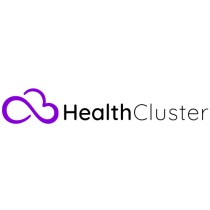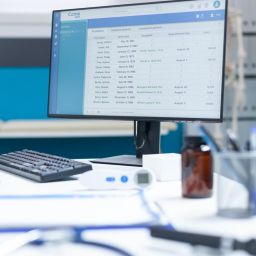
Utilization Management (UM) is a crucial part of modern healthcare systems, playing a vital role in ensuring patients receive necessary, appropriate, and cost-effective medical services. As healthcare costs rise and resource constraints increase—particularly in fast-growing healthcare markets like the Middle East and North Africa (MENA)—having a robust UM module integrated within a Hospital Information System (HIS) becomes more essential than ever.
What Is Utilization Management?
Utilization Management refers to the process of evaluating the necessity, appropriateness, and efficiency of the use of healthcare services, procedures, and facilities. It typically includes pre-authorization, concurrent review, discharge planning, and retrospective review.
The main goal of UM is to reduce unnecessary medical interventions and optimize the use of available resources, all while ensuring the patient receives high-quality care. It bridges the clinical, administrative, and financial arms of healthcare operations, creating a data-driven, policy-compliant workflow.
Why Healthcare Facilities in the MENA Region Need a UM Module
Healthcare systems across the MENA region are under pressure to deliver higher-quality services with limited resources. Public and private hospitals alike face rising demand, chronic disease burdens, and a need for cost-effective care delivery. A utilization management module helps:
-
Control excessive healthcare costs by eliminating duplication and unnecessary treatments.
-
Maintain regulatory and payer compliance.
-
Ensure faster approvals for procedures and treatments.
-
Reduce inpatient length of stay and optimize bed occupancy.
-
Integrate evidence-based guidelines into daily operations.
Key Features of the Utilization Management Module in Our HIS
Our HIS’s Utilization Management module is tailored for healthcare facilities in the MENA region and supports both Arabic and English languages. Here are the key features:
1. Automated Authorization Workflows
Our UM module streamlines pre-authorization requests and approvals, enabling real-time communication between physicians, insurance coordinators, and payers. Custom workflows can be created for different procedures or specialties, minimizing delays in care delivery.
2. Clinical Decision Support
The system incorporates evidence-based guidelines and protocols. This assists clinicians in determining the medical necessity of tests, surgeries, or admissions. Integrated tools flag potentially redundant or low-value services, helping ensure compliance and reduce resource waste.
3. Concurrent Review & Monitoring
Real-time tracking of patient care throughout their hospital stay helps manage resource allocation such as ICU beds, diagnostic services, and surgical slots. Alerts and reminders keep the care team informed about length of stay, treatment progress, and discharge readiness.
4. Discharge Planning Integration
UM is closely tied with the Discharge Management Module of the HIS. It ensures that patients leave the facility when clinically appropriate and with a complete after-care plan in place. This reduces readmission rates and enhances patient outcomes.
5. Audit & Retrospective Review
The module allows for comprehensive retrospective reviews to identify patterns of overuse or underuse. These audits provide valuable insights for policy improvement, training needs, or payer negotiations.
6. Customizable Utilization Rules
You can define utilization policies based on payer type, procedure codes, diagnosis codes (ICD-10), or insurance provider rules. This supports compliance with regional insurance and regulatory authorities, such as CCHI (Saudi Arabia) and DHA (UAE).
7. Multi-Payer and Insurance Integration
The UM module integrates seamlessly with insurance and claims processing modules in the HIS, supporting end-to-end RCM (Revenue Cycle Management). It allows easy coordination with national insurance systems, including Daman, Bupa, Tawuniya, and NAS.
Benefits of the Utilization Management Module
1. Reduced Operational Costs
By ensuring that only necessary services are delivered, hospitals can avoid wasteful expenditure and reduce costs associated with overuse of diagnostics, drugs, or beds.
2. Improved Patient Care Quality
By aligning care decisions with clinical guidelines, patient safety and outcomes are improved. Fewer unnecessary procedures mean fewer complications or errors.
3. Increased Efficiency and Throughput
The module reduces wait times for procedures by flagging high-priority cases and ensuring timely approvals. It enhances bed turnover rates and optimizes resource distribution.
4. Compliance with Local Health Authorities
In regions like the UAE and Saudi Arabia, where regulations are becoming stricter, having a utilization management process helps in reporting, compliance, and audit readiness.
5. Analytics and Reporting
Built-in dashboards and analytics tools allow hospitals to monitor KPIs such as:
-
Average length of stay (ALOS)
-
Bed occupancy rates
-
Percentage of denials
-
Pre-authorization turnaround times
-
Utilization trends per department
Integration with Other HIS Modules
Our UM module integrates seamlessly with:
-
Electronic Medical Records (EMR): To access clinical histories and ensure appropriate treatment decisions.
-
Radiology and Lab Information Systems (LIS/RIS): To manage test utilization.
-
Pharmacy Module: To review prescription appropriateness.
-
Billing and Claims: To validate service authorization before invoicing.
-
Mobile App for Doctors: To approve or request utilization reviews on-the-go.
Tailored for the MENA Region
Our HIS and Utilization Management module are fully localized for MENA needs:
-
Arabic/English bilingual interface
-
Compliance with CCHI, DHA, MOHAP, and HAAD regulations
-
Integration with e-claims and national payer portals
-
Customizable for public, private, or hybrid hospital structures
-
Scalable for clinics, tertiary hospitals, and group networks
Final Thoughts
A Utilization Management module is not just an administrative tool—it is a strategic asset for hospitals seeking to improve quality while managing costs. Our HIS ensures that healthcare institutions in the MENA region are empowered with a smart, policy-compliant, and efficient UM module that can scale with your operations and regulatory landscape.
If you’d like a personalized walkthrough of how the module works in your specific country or facility setup, contact us today. Let us help you drive better outcomes through smarter resource utilization.















